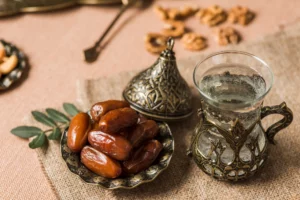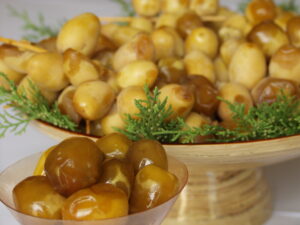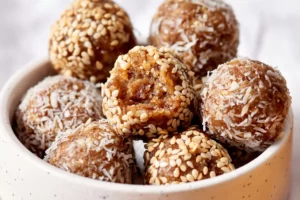Discovering the Delights of Kurma: A Journey into the World of Dates
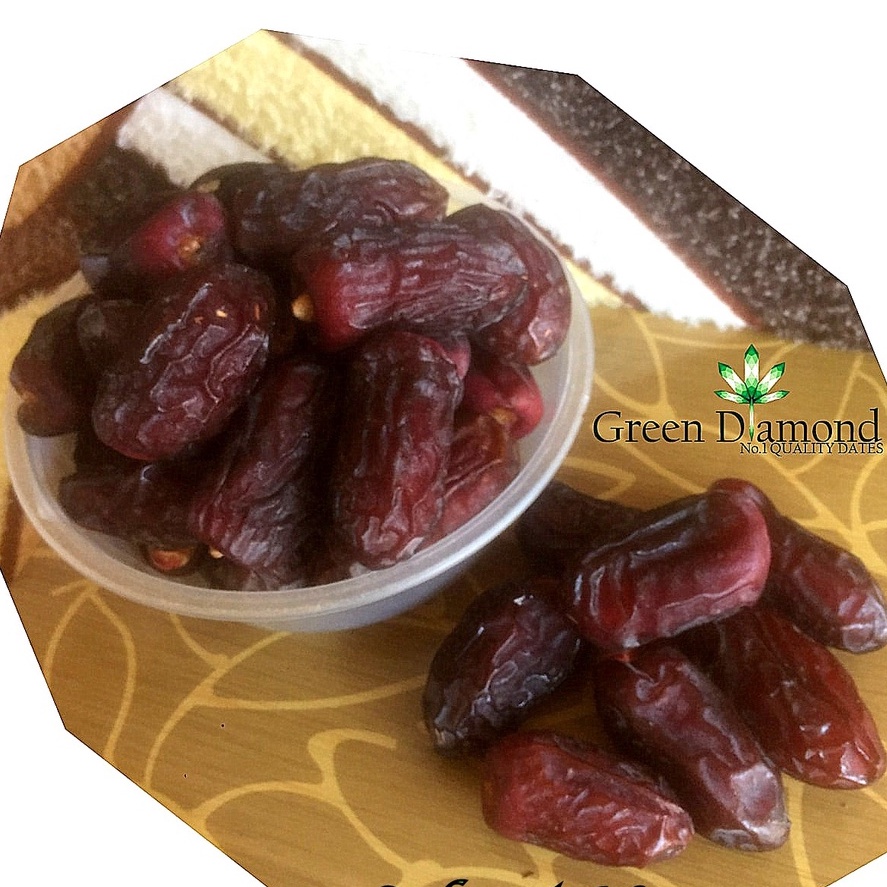
Dates, known as Kurma in many parts of the world, are a fruit with a rich history and a delightful taste. In this blog post, we embark on a captivating journey to explore the wonders of Kurma. From their ancient origins to their cultural significance and culinary marvels, we will delve into the world of these sweet fruits. Join us as we discover the delights of Kurma.
During the holy month of Ramadan, Muslims fast from dawn to sunset as an act of worship and self-discipline. The fast is broken each evening with a meal called Iftar, and it is customary in many Muslim communities to break the fast with dates. Here’s an explanation of the process of breaking the daily fast with dates during Ramadan:
1. Sunset: As the sun sets and the call to prayer (Adhan) is heard, Muslims gather to break their fast. This time is known as Iftar. It is important to note the precise time of sunset, which is determined based on the local sighting of the moon or astronomical calculations.
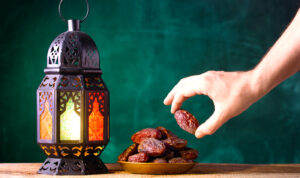
2. Dates: The tradition of breaking the fast with dates dates back to the time of Prophet Muhammad (peace be upon him). It is believed that he would break his fast with fresh dates, and if those were not available, he would consume dried dates. Dates hold significance as a wholesome and nutritious food that provides quick energy after a day of fasting.
3. Invocation (Dua): Before eating the dates, it is common for Muslims to recite a short prayer, known as a Dua, to express gratitude and seek blessings from Allah. This supplication varies among individuals and cultures, but a common Dua is: “Allahumma laka sumna wa bika aamanna wa ‘alaika tawakkalna wa ‘ala rizq-ika aftarna” which translates to “O Allah! For You, we have fasted and in You, we believe, and on You, we rely, and with Your sustenance, we break our fast.”
4. Hydration: After consuming dates, it is customary to drink water, milk, or other beverages to rehydrate the body after the day-long fast. Hydration is crucial to replenish fluids lost during the fasting period.
5. Main Meal: Following the consumption of dates and beverages, Muslims typically proceed to have a complete meal for Iftar. The meal usually includes a variety of dishes, including soups, salads, main courses, and desserts. The specific dishes vary based on cultural traditions and personal preferences.
The process of breaking the daily fast with dates during Ramadan carries both cultural and religious significance. It not only provides a quick source of energy but also serves as a reminder of the traditions and practices of Prophet Muhammad (peace be upon him) and the importance of gratitude and blessings in the Islamic faith.
natural sweetness and unique flavor make them a versatile ingredient in various culinary creations. They can be used in sweet treats like energy balls, smoothies, and desserts, as well as in savory dishes like salads, tagines, and rice dishes.
The Ancient Origins of Kurma
A Fruit with a Timeless History
Kurma has a long and storied past that dates back thousands of years. The cultivation of dates can be traced to ancient Mesopotamia (present-day Iraq), where they were highly valued for their nutritional value and ability to flourish in arid regions.
A Symbol of Abundance and Prosperity
Throughout history, dates have been revered as a symbol of abundance and prosperity. The date palm tree, which produces Kurma, was considered a sacred tree in many ancient civilizations. Its ability to bear fruit in harsh conditions made it a symbol of resilience and prosperity.
The Cultural Significance of Kurma
A Culinary Staple in Many Cultures
Kurma holds great cultural significance in various parts of the world. They are deeply rooted in Middle Eastern, North African, and South Asian cuisines. In these regions, dates are used in a wide range of traditional dishes, desserts, and beverages, showcasing their versatility and unique flavor.
Religious Observances and Festivals
Kurma plays an important role in religious observances and festivals. In Islam, dates are traditionally consumed to break the daily fast during the holy month of Ramadan. They hold symbolic value and are believed to provide nourishment and energy after a day of fasting. Dates are also associated with other religious observances and festivals in different cultures.
Exploring the Diverse Varieties of Kurma
Medjool: The King of Dates
Medjool dates are often referred to as the “king of dates” due to their large size, soft texture, and rich flavor. They have a caramel-like taste and are enjoyed both fresh and in various culinary preparations.
Deglet Noor: The Golden Date
Deglet Noor dates are characterized by their golden color and semi-dry texture. They have a sweet and nutty flavor, making them a popular choice for snacking and baking.
Barhi: A Delicate Delight
Barhi dates are known for their soft and creamy texture. They have a rich caramel-like flavor with hints of honey. Barhi dates are often enjoyed fresh and are a favorite in Middle Eastern cuisine.
The Nutritional Benefits of Kurma
A Natural Source of Energy
Kurma is a nutrient-dense fruit, rich in carbohydrates, fiber, and essential minerals like potassium and magnesium. They provide a quick source of energy, making them an excellent snack for athletes and those in need of an energy boost.
Aiding Digestion and Promoting Health
Dates are known for their high fiber content, which aids in digestion and promotes a healthy gut. They are also packed with antioxidants that help protect against cell damage and inflammation.
Incorporating Kurma into Your Culinary Adventures
Delicious in Both Sweet and Savory Dishes
Kurma’s natural sweetness and unique flavor make them a versatile ingredient in various culinary creations. They can be used in sweet treats like energy balls, smoothies, and desserts, as well as in savory dishes like salads, tagines, and rice dishes.
As a Natural Sweetener and Alternative
Kurma can be used as a natural sweetener in place of refined sugar in recipes. Their rich, caramel-like taste adds depth to baked goods, granolas, and sauces while providing natural sweetness.
Conclusion
Kurma, or dates, have fascinated and delighted people for centuries. From their ancient origins to their cultural significance and culinary versatility, these sweet fruits continue to captivate us. Whether enjoyed fresh,dried, or incorporated into various dishes, Kurma offers a unique flavor and a wealth of nutritional benefits. So, embark on your own journey into the world of Kurma and savor the delights of this timeless fruit.
